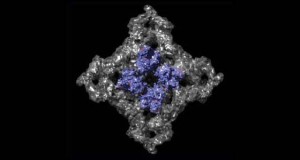Calcium ions play crucial roles in our bodies: they shape part of the cardiac action potential, mediate contraction of both cardiac and skeletal muscle, allow for the release of neurotransmitter and hormones, and regulate gene transcription, cell motility and much more. When normal Ca2+ entry is impaired, these can result in severe genetic diseases that are often fatal. Ca2+ enters the cytoplasm through specialized channels, selective for Ca2+. Our lab is dedicated to understanding how these channels work in both native and diseased states.
Our main focus is on two types of Ca2+ selective channels: voltage-gated calcium channels (CaVs) and ryanodine receptors (RyRs). Both CaVs and RyRs are dynamic proteins that can change their state depending on various input signals. It is impossible to fully appreciate their intricate functioning without knowing the 3D structure. On the other hand, having a 3D structure alone is not sufficient, because they can adopt multiple conformations that affect the passage of ions . We use protein crystallography to obtain atomic models, thus generating hypotheses about their function. We use electrophysiology and biochemical techniques to test these hypotheses.


